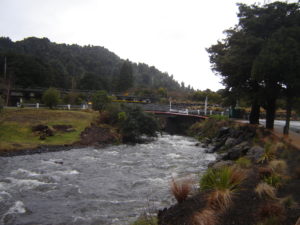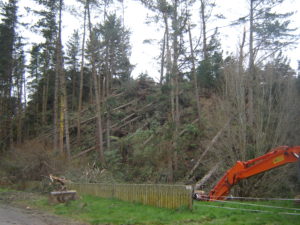 There are times when we lose control of our plans, when we simply surrender to the power of microbes and let things ride. We may have made promises to get things done, and they will not happen. We must ride out the storm instead.
There are times when we lose control of our plans, when we simply surrender to the power of microbes and let things ride. We may have made promises to get things done, and they will not happen. We must ride out the storm instead.
I have posted nothing new in two weeks not for lack of the desire to do so—indeed, I had several books and documents I planned to discuss on this blog—but because I had to surrender to the reality of pneumonia. I am on the rebound now, and I generally have a long history of quick and effective rebounds, but fever, chills, and the hacking cough that are typically prime symptoms of pneumonia had me in their firm grip for a week and a half, starting just a little less than two weeks ago and petering out just three days ago under the impact of antibiotics. As you can imagine, it was no fun.
It was not just a matter of sustaining this blog. I missed six straight days of work at the American Planning Association, and when you count the weekend between those days, you see the overall stretch of futility that ate up my time. I lay on the couch, on the bed, under blankets, alternately sweating and freezing, arranging for a visit with my doctor, then getting a chest x-ray to confirm the diagnosis. It is, of course, impossible to get comfortable, let alone maintain any significant energy level. I also needed to grade papers for a graduate seminar on disaster planning that I teach every fall for the University of Iowa School of Urban and Regional Planning. The grades are due shortly, yet I had none of the energy or attention span needed that first week to review 15- or 20-page papers that were basically case studies in disaster recovery. I finally got them done in the last few days. Meanwhile, here in Chicago, it was cold outside, not a great outdoor environment for anyone who had elevated temperatures. The fear of experiencing a setback until I was well on the road to recovery kept me from being very adventurous. But by yesterday I was willing and able to shovel snow.
Sometimes it seems that life is piling on. Just as I was descending into illness, without initially knowing it was pneumonia, my 5 ½-year-old laptop suffered the loss of its graphics drive, and the cost of repairs drove me to replace it, but it took me two days after learning this news from the Geek Squad before I could muster the energy to go to Best Buy, which owns Geek Squad, to choose a new computer. Even then, as I stood in the aisle waiting for a sales clerk to complete his business with another customer, I was looking around for a chair for fear I would not be able to stand long enough. But I did, and I chose a new Dell laptop, and then came the business of installing software and transferring my data. I left that to the Geek Squad. But altogether, presuming I would have had much ambition for such things, it meant that I had no functioning computer for almost four days. And then I still had to find the patience to learn how to make certain new features work. But I at least had the ball rolling again.
I will raise my voice again, in this blog and elsewhere, soon enough. But I was reminded that we all have these vulnerabilities. Unlike the Hazards Planning Center at APA, this blog is a one-man show. When that one man is under the weather, it all comes to a halt. But I am back. Happy holidays to all.
Jim Schwab


